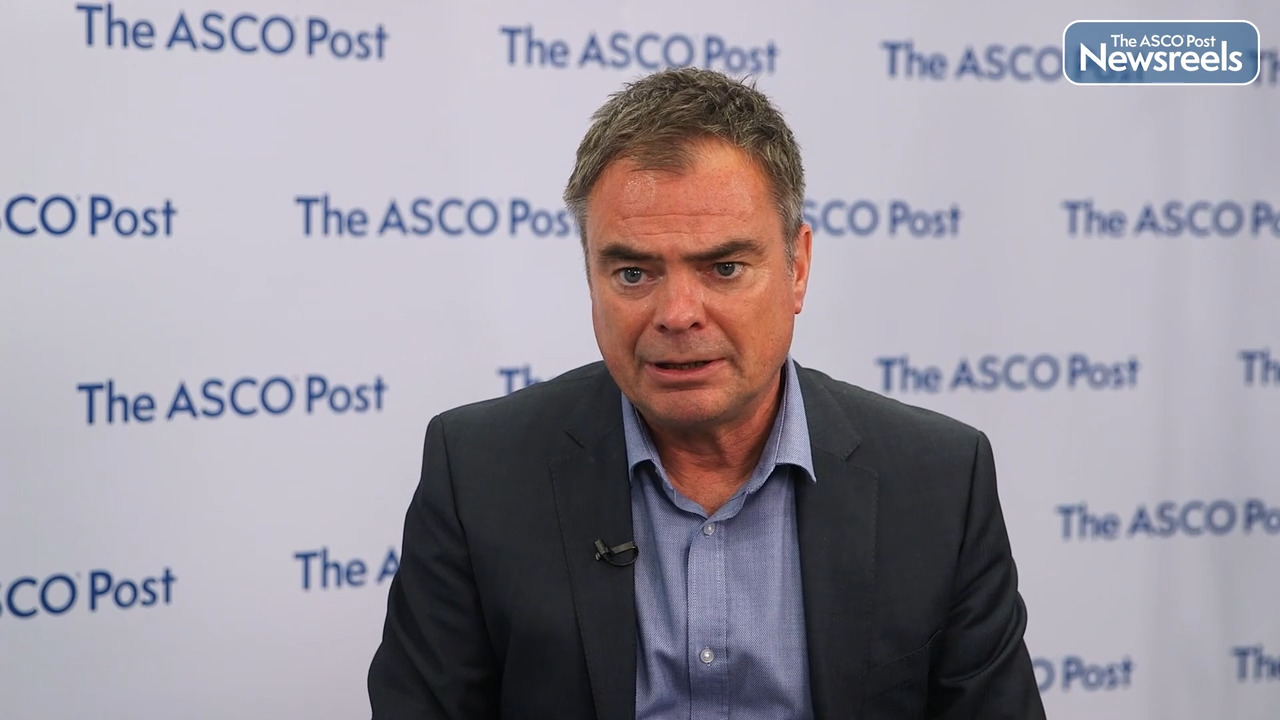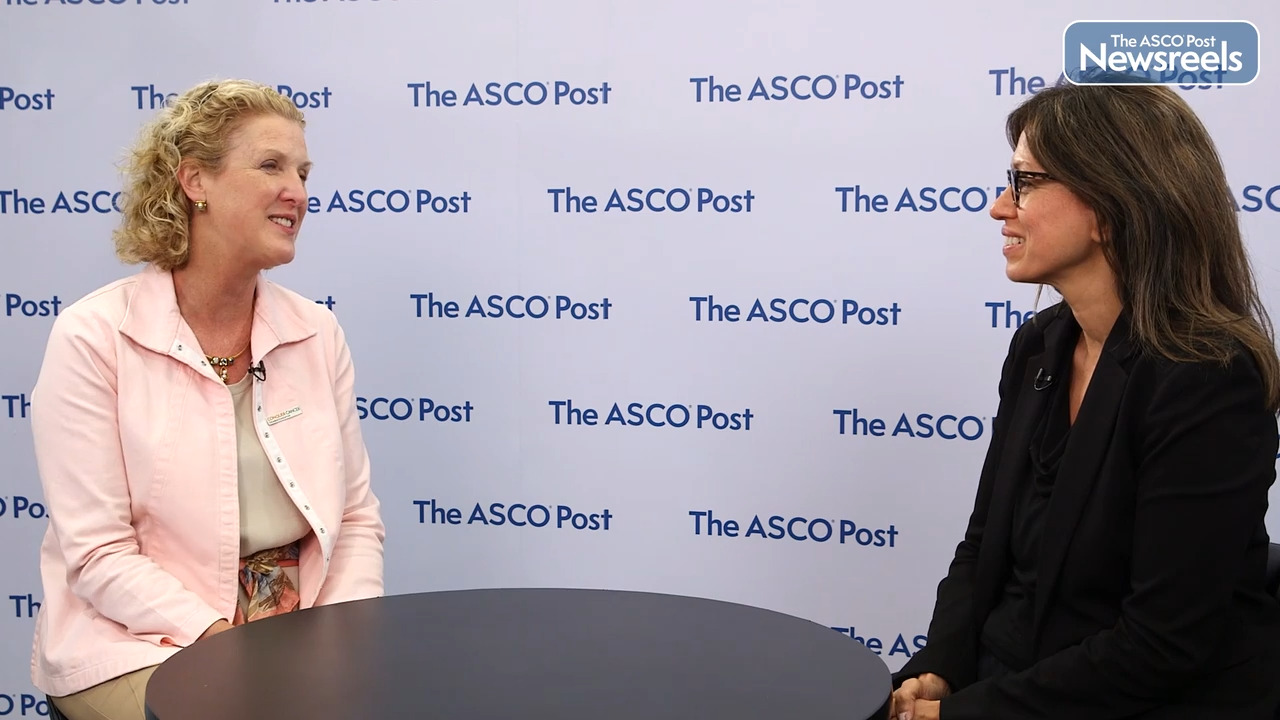Alfredo Carrato, MD, PhD, on Pancreatic Cancer: Nab-Paclitaxel, Gemcitabine, and FOLFOX for Metastatic Disease
2022 ASCO Annual Meeting
Alfredo Carrato, MD, PhD, of Alcala de Henares University in Spain, discusses phase II results from the SEQUENCE trial, which showed that nab-paclitaxel, gemcitabine, and modified FOLFOX showed significantly higher clinical activity than the standard nab-paclitaxel and gemcitabine in the first-line setting of patients with untreated metastatic pancreatic ductal adenocarcinoma (Abstract 4022).
Transcript
Disclaimer: This video transcript has not been proofread or edited and may contain errors.
It's a pleasure for me to show the results of the SEQUENCE trial. The SEQUENCE trial was a randomized phase two trial in pancreatic cancer patients, metastatic ones on first line and we tried to increase the efficacy of the regimens used for treating these patients. So the rational that there were two subtypes of pancreatic cancer, the basal one responded better to Nab-Paclitaxel Gemcitabine and the classical one better to FOLFIRINOX. So as it was impossible to give both regimens at the same time for toxicity issues, we decided to give them sequentially first Nab-Paclitaxel Gemcitabine, and then not FOLFIRINOX, FOLFOX because we thought that the oxaliplatin was the main drug of the combination. And on top of that, we had that Nab-Paclitaxel was given up front and it was depleting this trauma and allowing the drugs to get in touch more efficiently with the tumor cells. So we performed a phase I trial, and we were surprised because we were expecting some neurological toxicity, but no neurologic toxicity appeared and it was safe at full doses and it was published at the European General Cancer two years ago. Then we designed this randomized phase two trial, trying to increase 50% the survival of patients at one year. It was from 35% to 50%, more or less. So with these things in mind, we designed a trial in which 78 patients per arm were needed and the safety results showed that neutropenia and thrombocytopenia were higher in the experimental arm, significantly higher, 47% and 26% and the efficacy at 12 months hypothesis was met. We found that 55.5% of patients were alive at one year in the experimental arm and only 35% in the control arm, which was Nab-Paclitaxel and gem without FOLFOX. So we looked for other efficacy parameters, like time to progression free survival, overall survival, and all of them were positive. In favor of the experimental arm. We reached a median overall survival of 13.2 months versus 9.5 months in the control arm. The hazard ratio was lower to 0.65 and this was real good surprise because we have discovered a new treatment option for our patients and pancreatic cancer patients have few good news. In the last 20 years, just two trials demonstrated an increase in efficacy rates. One of them was the Nab-Paclitaxel Gemcitabine and now against this regimen, we have demonstrated a superiority in efficacy. So we are happy about that and because our patients will live longer and have another option for treatment. This is only for a core zero and one patients, it's only for well fit patients, not for performance status, middle, core two, or very old patients but when you have these patients, this regimen provides excellent results.
Related Videos
The ASCO Post Staff
Alicia K. Morgans, MD, MPH, of Dana-Farber Cancer Institute, and Ian D. Davis, PhD, MBBS, of Monash University and Eastern Health, discuss the latest findings from ANZUP Cancer Trials Group’s ENZAMET cooperative group trial of enzalutamide in patients with metastatic hormone-sensitive prostate cancer. The results corroborate the benefit of enzalutamide with improved overall survival, and involve some exploratory subgroup analyses (Abstract LBA5004).
The ASCO Post Staff
Robert Hugh Jones, MD, PhD, of Cardiff University and Velindre Hospital, discusses results from an updated analysis of the FAKTION trial, which showed improved overall survival with fulvestrant plus capivasertib in women with metastatic estrogen receptor–positive breast cancer whose disease had relapsed or progressed on an aromatase inhibitor. The benefit may be predominantly in patients with PIK3CA/AKT1/PTEN pathway–altered tumors, a topic researchers continue to study in the phase III CAPItello-291 trial (Abstract 1005).
The ASCO Post Staff
Gilberto de Lima Lopes, Jr, MD, MBA, of the Sylvester Comprehensive Cancer Center at the University of Miami, and Karen L. Reckamp, MD, of Cedars-Sinai Medical Center, discuss phase II findings from substudy S1800A of the Lung-MAP protocol. The data showed that ramucirumab and pembrolizumab improved overall survival compared with the standard of care for patients with advanced non–small cell lung cancer who were previously treated with immunotherapy and platinum-based chemotherapy (Abstract 9004).
The ASCO Post Staff
Neal D. Shore, MD, of the Carolina Urologic Research Center, discusses his study findings, showing that germline genetic testing influenced care for patients with prostate cancer. Men whose genetic test was positive for a pathogenic germline variant received more recommendations for changes to follow-up and treatment, and for testing and counseling of relatives, than did patients with negative or uncertain test results (Abstract 10500).
The ASCO Post Staff
Lisa A. Carey, MD, of the University of North Carolina Lineberger Comprehensive Cancer Center, and Shanu Modi, MD, of Memorial Sloan Kettering Cancer Center, discuss the phase III findings from the DESTINY-Breast04 trial, which compared fam-trastuzumab deruxtecan-nxki (T-DXd) vs treatment of physician’s choice (TPC) in patients with HER2-low unresectable and/or metastatic breast cancer. T-DXd is the first HER2-targeted therapy to demonstrate clinically meaningful improvement in progression-free and overall survival compared with TPC in this patient population, regardless of hormone receptor or immunohistochemistry status or prior use of CDK4/6 inhibitors (Abstract LBA3).





